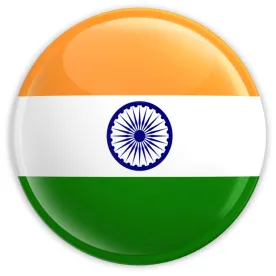On May 9, 2016, the Indian Patent Office (IPO) granted a patent to Gilead Pharmasset, LLC (Gilead) for its blockbuster anti Hepatitis-C virus (HCV) drug, sofobuvir (known commercially as “Solvaldi”) holding that the invention was novel, inventive and did not fall within the preclusion of Section 3(d) of the Indian Patents Act. The 58 page order rejected six pre-grant oppositions that had been filed and ordered the granting of the application.
In 2014, NATCO Pharma, the Initiative for Medicines, Access & Knowledge (I-MAK) and DELHI Network of Positive People (DNP), BDR Pharma, Sankalp Pharmaceuticals Pvt Ltd., Optimus Group and India Cores (collectively, the “pre-grant opponents”) filed pre-grant oppositions against Gilead’s application on various grounds. In early 2015, the IPO, without holding any opposition proceedings, issued an order (the 2015 order), rejecting the application for falling under the preclusion of Section 3(d) of the Indian Patents Act, despite finding the claims to be novel and inventive. However, the 2015 order relied heavily on the interpretation given by Indian Supreme Court in Novartis vs. GOI, CA No.2706-2726/2013 para 180-192, that the term “efficacy” in section 3(d) meant “therapeutic efficacy”. The Controller also stated in his order that Gilead showed only “cytotoxicity data to prove the difference in properties which is insufficient to prove significant increase in the therapeutic efficacy. The data does not show any clinical trials to prove the improvement in the therapeutic efficacy”. The Controller also distinguished any relevance this application had with Roche vs. Cipla stating, “The Judgement of Honourable Delhi Court in case of Roche vs. Cipla does not apply on this case as Erlotinib and Gefitinib were different in groups by substitution of a methyl groups with ethnyl group at the third meta position whereas in the present case the difference lies only in the orientation of fluoro group of compound XI of D1. Finally, by rejecting the application, the Controller avoided initiating any pre-grant opposition. As a result, Gilead challenged the 2015 order before the Delhi High Court, which remanded the matter to the IPO. A new Controller was assigned the task of reinitiating the proceedings. In February 2016, the IPO began hearing the oppositions in an inter parte manner amidst demonstrations by activists and non-government organizations (NGOs) supporting patient rights and access to medicine.
The key arguments presented by the pre-grant opponents were: (a) lack of novelty, (b) lack of inventive step and (c) non-patentability in view of section 3(d). Considering the arguments of all the parties, the Controller in a very detailed technical analysis, held that the invention involved both novelty as well as inventive step and overcame the patentability barrier set by section 3(d). Specifically, he observed that with respect to novelty, the prior art neither exemplified nor provided an enabling disclosure with respect to the claimed compound. Therefore, an arbitrary selection without the use of hindsight was impossible. As a result, he held that the claimed compounds were not anticipated by the cited prior art.
Regarding inventive step, the Controller agreed with Gilead that the cited prior art documents failed to provide a clear teaching for a person skilled in the art to arrive at a substitution pattern as recited in the claims. Moreover, the extent of unpredictability in the synthesis of the nucleoside compounds of this class was well established by the cited prior art documents. Therefore, a skilled person aware of the complexity of the structure activity relationship involving the anti-HCV activity of ribonucleosides and the unpredictability of arriving at the desired result by specific substitution, would simply not be motivated to arrive at the claimed invention in view of the teaching of the prior art. In fact, it was noted that, substantial experimentation would be required to obtain the claimed invention.
With regard to unpatentability under section 3(d), the Controller held that it was difficult to accept that claimed compounds were derivatives of known compounds when such compounds having anti-HCV activity were simply not exemplified in any of the cited prior art documents. Specifically, the Controller noted that the claimed compounds were not polymorphs, isomers, salts, etc. of a known compound. Moreover, relying on the decision of the Delhi High Court in the Roche vs. Cipla (2015), the Controller held that the claimed invention exhibited an added layer of enhanced efficacy as the specification provided comparative activity and toxicity data in mice and monkeys. Moreover, further comparative activity data had been filed during examination. Additionally, the Controller observed that medicine prepared from the claimed compounds has resulted in a breakthrough treatment of HCV infection and the medicine is approved in many countries including United States of America and India. Thus, the claimed invention was found to be outside the prohibition under section 3(d) rejection.
However, this case is far from over. On May 13, 2016, I-MAK and DNP filed an appeal with the Delhi High Court on the grounds that the decision of the Indian Patent Office is contrary to the public interest, fails to assess the full scientific and legal evidence presented and ignores key Indian patent law and judicial precedent. Please watch the BRIC Wall Blog for further updates on this appeal.




 />i
/>i

